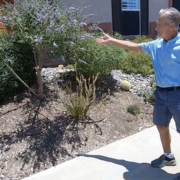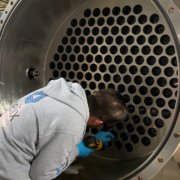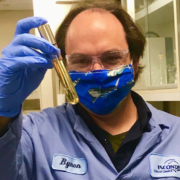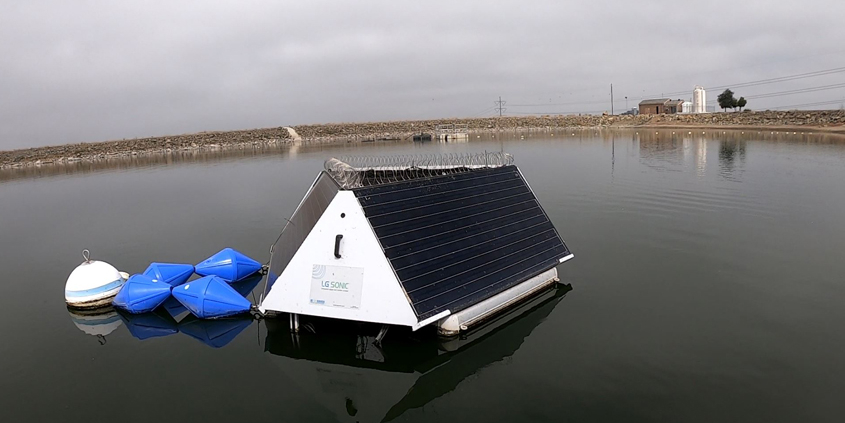 LG Sonic’s specific low power ultrasonic transmitters emit signals which are not harmful to people, fish, plants or other wildlife. Photo: Vallecitos Water District
LG Sonic’s specific low power ultrasonic transmitters emit signals which are not harmful to people, fish, plants or other wildlife. Photo: Vallecitos Water DistrictVallecitos WD Uses Innovative Technology to Monitor Water Quality
The Vallecitos Water District is known for its sustainable practices in water and wastewater treatment processes, without any compromise in water quality. The district is now using a new ultrasound technology to address water quality at the Stanley A. Mahr Reservoir with a reduced need for chemical treatment.
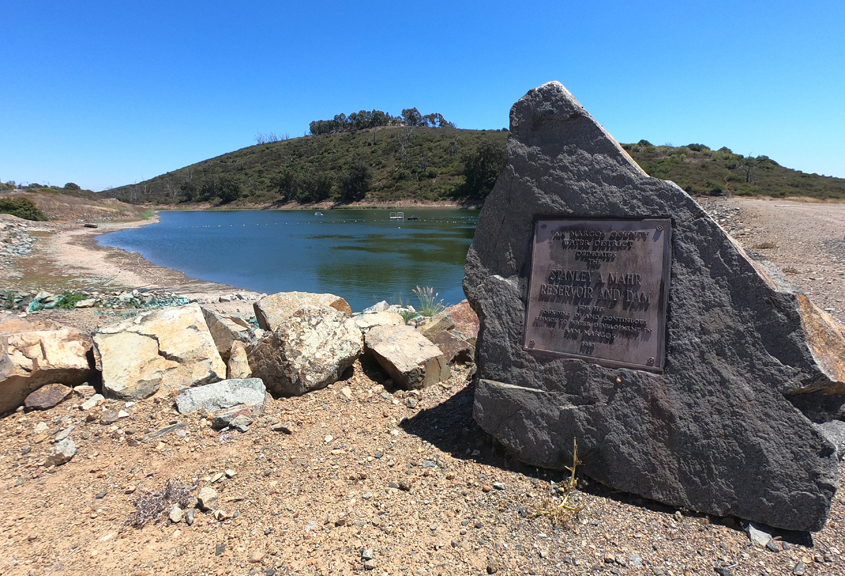
The Mahr Reservoir stores up to 54 million gallons of reclaimed water to be used later for irrigation. Photo: Vallecitos Water District
Mahr Reservoir was completed in 1981. Originally called La Costa Storage No. 1 Dam and Reservoir, it was renamed after the district’s original founder 35-year board member Stanley A. Mahr. It stores up to 54 million gallons of reclaimed water to be used later for irrigation. The district has contracts with the City of Carlsbad and Olivenhain Municipal Water District to provide water as needed, as much as five million gallons of recycled water daily.
Because the reservoir’s location receives intense sunlight with little rain, algal blooms can occur in the nutrient-rich recycled water. The most common method of treating algal blooms is with harmful chemicals. They are costly and labor-intensive.
The district instead uses technology developed by the international company LG Sonic, which provides a complete overview of the water quality allowing swift identification and treatment of algal blooms.
New ultrasound technology reduces cost and environmental harm
NOTE: Portions of this video were filmed in 2019, prior to the COVID-19 pandemic and any mandatory face covering requirements.
Every 10 minutes, an MPC Buoy in the Mahr Reservoir measures and monitors green and blue-green algae population, pH, turbidity, dissolved oxygen, and water temperature. The data is collected in real time and uploaded to a web-based software. The software uses the data to predict algal blooms three to ten days in advance.
The LG Sonic buoy can create a sound barrier in the top water layer, which affects the buoyancy of the algae, preventing it from rising up where it can absorb sunlight for photosynthesis to grow. Without sunlight and nutrients, algae cells sink to deeper water where they degrade due to natural bacteria and do not release toxins into the water.
With overall algae levels reduced by this technology, the need for chemical treatment is also reduced, allowing the Vallecitos Water District to provide high quality reclaimed water to its customers.
LG Sonic’s specific low power ultrasonic transmitters emit signals which are not harmful to people, fish, plants or other wildlife.
Divers lend a hand at Mahr Reservoir
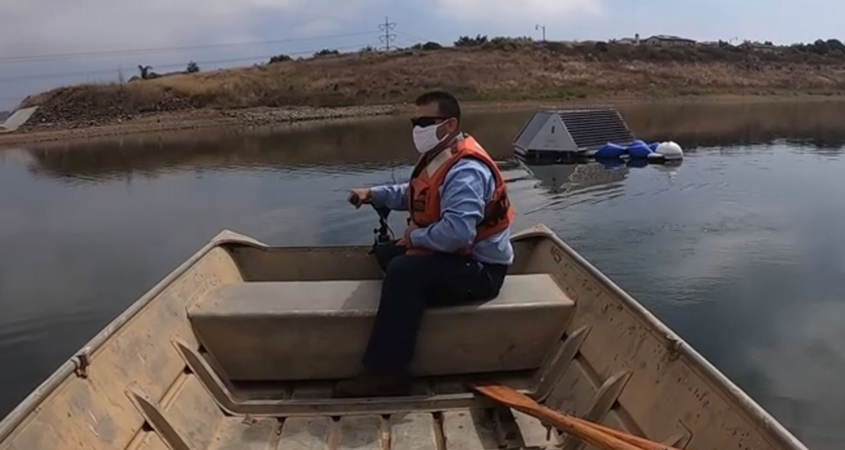
Meadowlark Water Reclamation Facility Wastewater Treatment Plant Operator II Ivan Murguia monitors water quality. Photo: Vallecitos Water District
After the initial installation, an unusual incident occurred. Electrical cords providing power to the reservoir’s water pumps became wrapped around the inlet/outlet pipes located underwater. Mahr’s algae meter needs water flow from the reservoir to be able to read the algae level.
Maintenance staff couldn’t untangle the power cords from above the water. Specialty divers were called in to address the problem. Vallecitos Pump and Motor Technician Dale Austin also had divers inspect pneumatic (air) and hydraulic (oil) lines to the motors (actuators) that open and close the inlet and outlet valves for leaks. Divers successfully untangled the electrical cords and they were secured to prevent future problems. Divers found no leaks on the lines.

